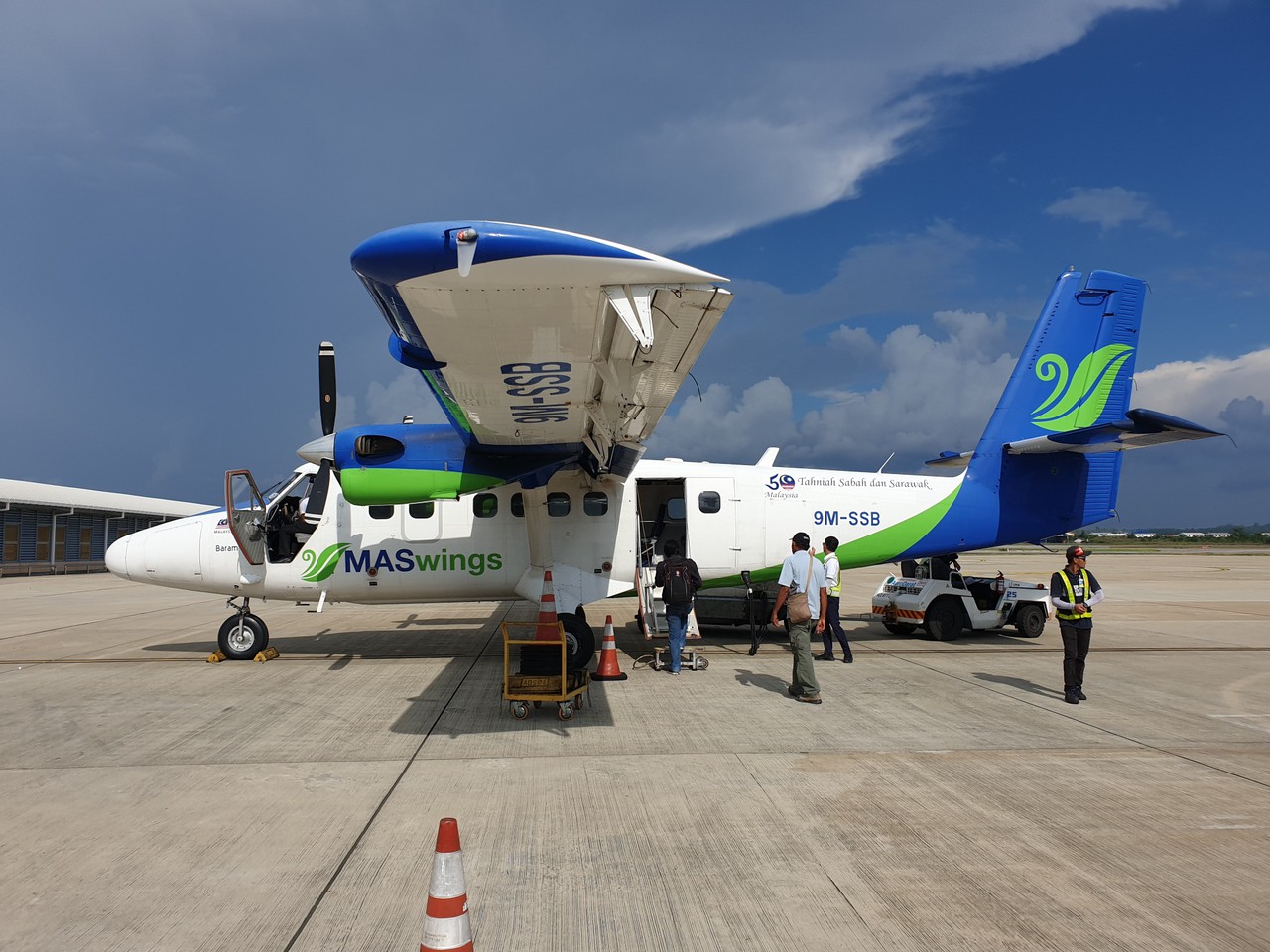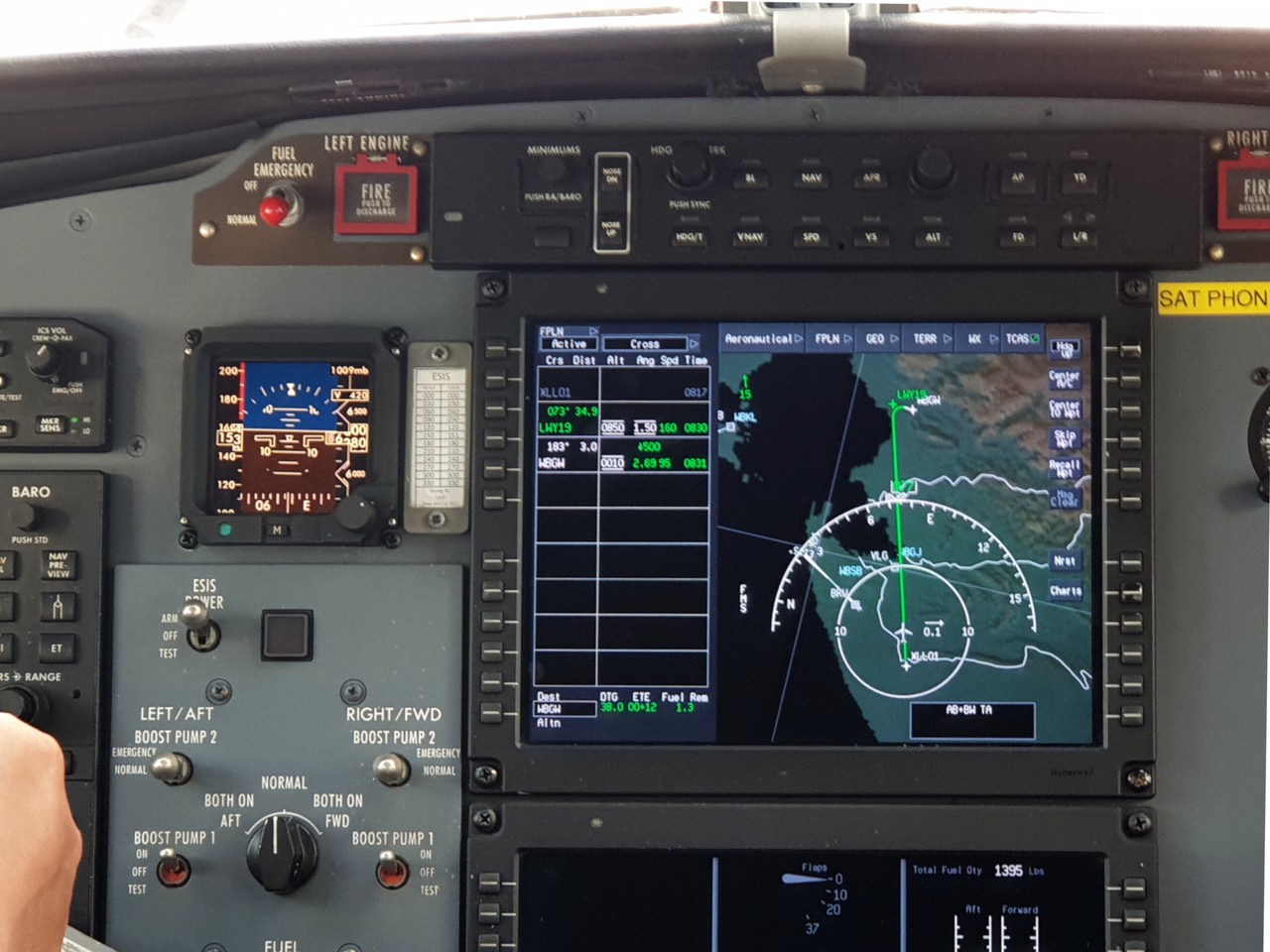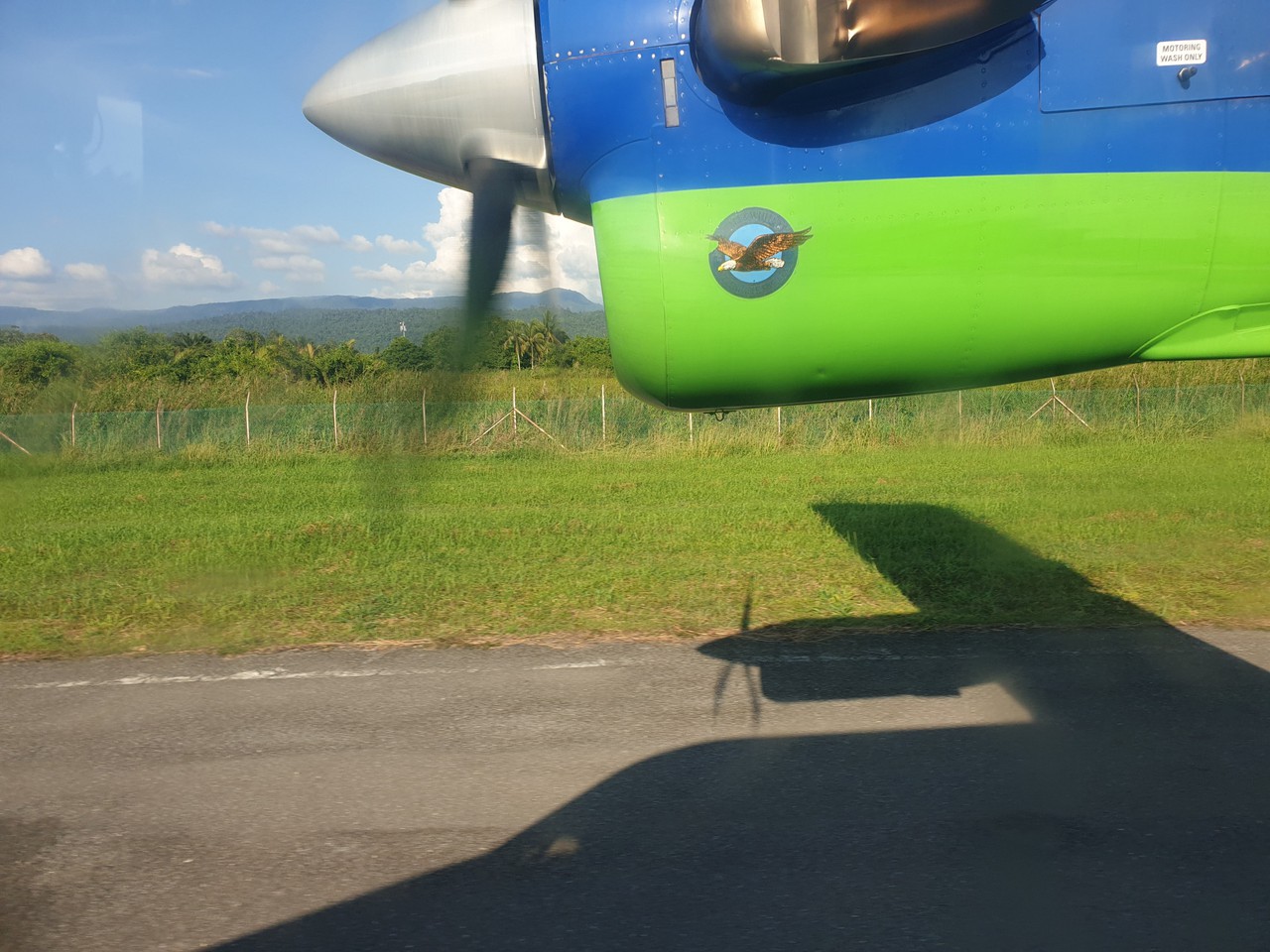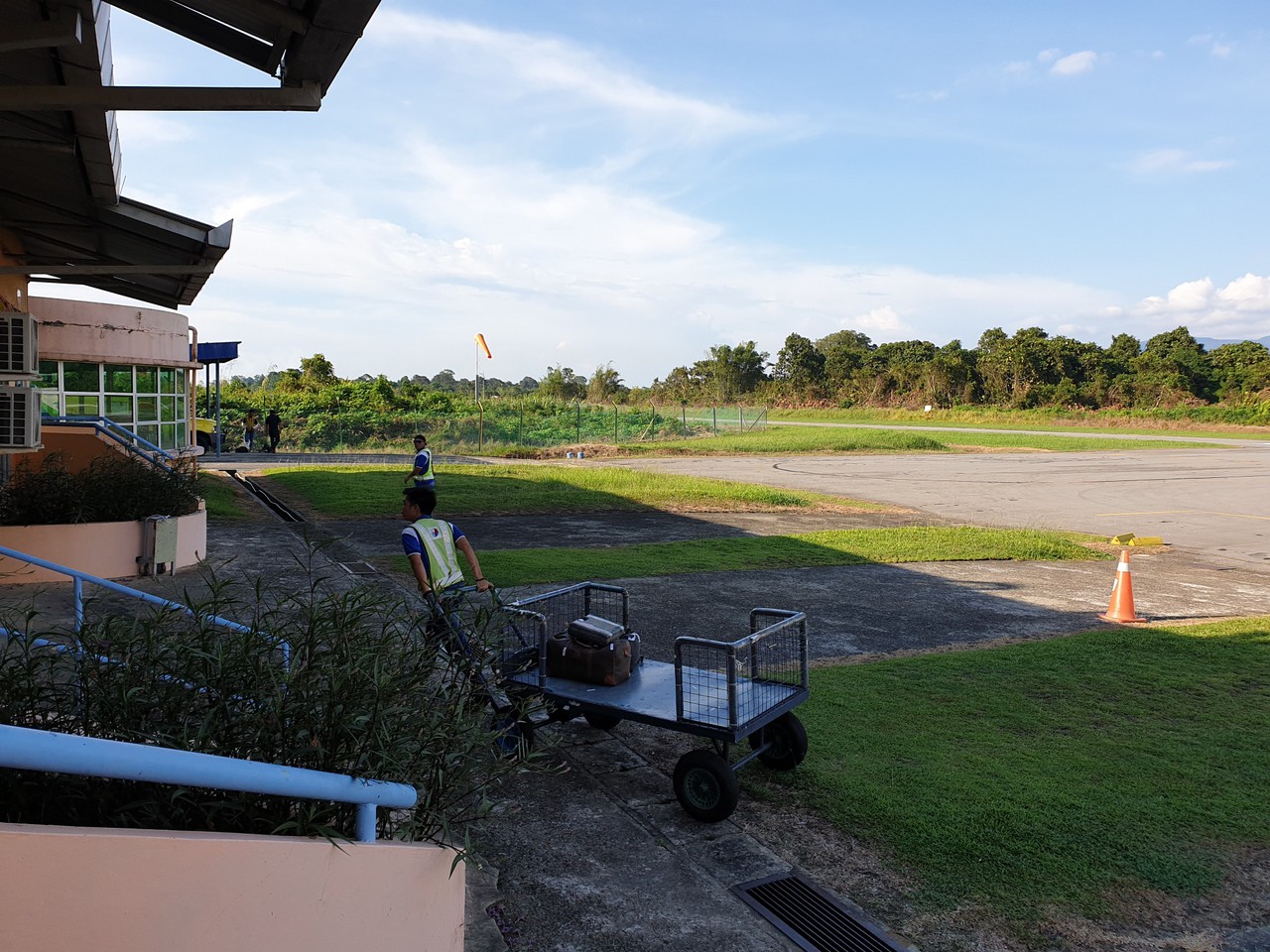Report #71: MH3518 - A taste of the rural life
This will be my report on flying on Malaysia Airlines (operated by MASwings) economy class from Miri MYY to Lawas LWY, an ultra short-haul intercity flight within Sarawak state in Malaysia, on board their De Havilland Twin Otter.
Flight routing
- 1
- 2
- 3Miri MYY - Lawas LWY on Malaysia Airlines/MASwings DHC-6-400 economy class
- 4
- 5Miri MYY - Johor Bahru JHB on AirAsia A320 economy class
- 6
- 7Kuala Lumpur KUL - Jakarta CGK on KLM 777-200ER economy class
Background
Thanks to SE Asia's generally large, dense population, there are very few true rural air services available around, one of which is MASwings' rural air services within East Malaysia. East Malaysia poses some very unique challenges, not only because there are people who live deep into the island's rainforest, but also because some areas, such as Lawas and Limbang, are pretty much connected to the rest of East Malaysia only via another country (that is, Brunei).
MASwings, a wholly owned subsidiary of Malaysia Airlines, run rural air services across East Malaysia by Twin Otter and ATR72 planes. There are a few interesting stuffs to see here:
- Unlike Susi Air's commercial operation in Indonesia using its Grand Caravan, MASwings charged a (heavily) subsidized rate which made it easier to reach,
- While Indonesia's rural air services can be found only by flying all the way to east Indonesia which costs a lot, Malaysia's rural air services are mainly based in Miri or Kuching, so a cheap reposition flight from KUL or SIN would suffice to get a taste of them.
Since I figured out I would have been in Singapore for the concert, I decided to make a twist to my weekend trip by trying the (still unreported here) product. Out of respect to some of the more poorly served communities (since a number of routes aren't even served daily), I also decided to try it on Miri MYY - Lawas LWY route, which was served multiple times daily and costed me RM125 (~US$31). While the mileage would be peanuts (if even any), it didn't matter much since the flight was of course the essence.

trip to myy and check-in
Though considered as one of the largest cities in eastern Malaysia, Miri is by SE Asian standard a quiet city.

The road from downtown to MYY was still covered with lush greeneries, and despite some traffic still flowed quite fast.

I arrived at MYY well ahead of the departure time. At the drop-off/pick-up area, its canopy was designed to somehow resemble KUL main terminal, yet on a lower budget.

Before entering the check-in area a security check was done on all checked bags only.

At first I went to MH's general check-in counters which was quite crowded, but I was wrong, ….

For there is one specially for all rural air services operated by Twin Otter planes. Check-in was fast, however there are two peculiarities that set it apart from many normal flights:
- MH's flights operated by Twin Otter planes were ineligible for self check-in, meaning this was the only available way to check-in, and
- During check-in I was weighed together with my carry-on bag (which in this case was my laptop backpack).
In the meanwhile, I checked the load for the flight, which was quite light.

My boarding pass was printed in MH's default stock paper and was nothing unusual except for the body (+ carry-on) weight shown below.

After I checked in I went out to the public area to get to the departure floor.

The departure floor featured even more stores and waiting area, where I decided to work on one of the restaurants while waiting for the flight.

I went through security, however since my flight was within Sarawak I bypassed the immigration checkpoint.

Sarawak state has its own immigration rules on top of what's applicable to the rest of Malaysia, thus the immigration clearance whenever leaving/entering Sarawak even including to/from peninsular Malaysia.

MYY transit area and departure
Don't expect SIN/XSP-level comfort in MYY - you'd be lucky to get seats with working power plugs.

Even that includes the so-called charging stations, where most of the ports were simply not working.

Across the entire transit area only one cookies store and one airport lounge existed. While the lounge was a Priority Pass lounge, I didn't want to waste my 1x/year allowance on what's probably a mediocre lounge anyway.

Situation at the gate as my flight was called for boarding (and yes, it was empty only after a couple of passengers boarded earlier).

After I had my boarding pass checked I was asked to go to the real gate.

From there it was a stair ride down to the waiting room.

Another waiting room was provided to wait for the pilots to prepare before the flight.

Safety demonstrations were done through the screen.

The FIDS of the late afternoon.

15 minutes before the STD we were directed by the ground staff to the corridor.

This corridor led to the parking stands of all DHT. Since many of the DHT were based in MYY, the parking area was naturally quite large.

The pilot and copilot walked along the apron to the plane since it was faster and there were only one of them in the entire part of the apron.

The plane for the late afternoon was 9M-SSB, a 5 1/2 years old DHT made by Viking. Despite her age, she still looked like brand-new thanks to the scorching weather.

The plane as seen from the side.

I boarded last through the rear door, and from there the riveted body could be clearly seen (not that it's an issue, since the plane usually flew quite low)

On board
Flight: MH3158
Plane: 9M-SSB
STD: 16:00
STA: 16:45
Load factor: 16% Y (3/19)
Seat type: Standard economy class (bulkhead aisle seat)
There was nobody to welcome me onboard as the flight crews were busy preparing for the flight.

Being used for rural air services, the seats were rather simple. They're also incredibly narrow, though, so at least I didn't get the single seat and had the seat beside me empty.

Legroom was indeed an issue, but being seated right behind the cockpit made it all really worth it.

The seatbelt was nothing unusual except the aircraft maker's brand.

The literature pocket contained an airsickness bag and a safety card.

There were also reading light and air nozzles, which only operated once the engine started.

I was seated next to the propeller, which proved to be a bit noisier than expected (not that the plane itself wasn't noisy - there's a reason the flight crew wore headphones throughout the flight).

The pilot and copilot were preparing for departure. Operating in such an uncomfortable environment, the copilot (and later on also the pilot) covered their arms from the sunlight.

It was soon time to taxi, which was quite fast. Also notice the fan, which also helped to cool down the cockpit from the sun's heat - even with air conditioning turned on.

MH's 738 made us hold for a couple of moments.

What followed was what was perhaps the most powerful takeoff roll of my life: we lifted off less than 20 seconds after the breaks were released.
View of downtown Miri as we further climbed.

The flight would fly at a meager altitude of up to 9000 feet.

As we climbed the view of the island changed slightly to plantation.

And by that, I mean chock full of it.

We had just started flying over Brunei.

At this point we had already started our descent in order to gain some speed, which meant some maneuvers trying to avoid the clouds whenever possible.

Every time the flight crew did so, though, they would also update their waypoint on the GPS.

What airport was that? Definitely not LWY, of course.

As we went further down we passed by Temburong bridge, connecting the two separate areas of Brunei through the estuary.

To the right were endless views of forest with little signs of habitation.

Nearing Lawas we were greeted by a more hilly, yet still mostly untouched terrain

After our flight which mostly went towards the northeast we turned for approach into runway 01/19

As we further approached Lawas the idyllic city was in full view from the right window.

The pilot opted to approach to runway 01, which meant turning around pretty close to the hills.

Could our plane land at such a short runway?

Of course - I still lived to tell the tale - in fact, the landing experience was akin to a car breaking on the expressway.

The parking stand and terminal were located at the southern end of the runway, so we turned around and had a short taxi.

Having thanked the pilot, I reached the tiny airport terminal.

The entire airport terminal building isn't much bigger than a large house.

The plane was being prepared for the next departure.

In this airport, luggage gets into a cart pushed by hand for less than 50 meters, so a motorized vehicle wasn't necessary.

Arrival at LWY and post-arrival trip
I reached the luggage claim hall, which simply consisted of a room with the luggage cart brought in.

Right after that was the public and check-in area, which resembled something more like an old-style office.

Outside several cars were already waiting. Thanks to Lawas' rough terrain, double cabin pick-ups seemed to be a local favourite.

At such a small city, though, you don't expect to see any shortage of space (I mean, even the road outside was clear most of the time) so parking was naturally free.








Amazing report with beautiful and neat pictures! Besides, it is really interesting to read about the experience of flying within what probably is one the most remote states in Malaysia.
Hi!
Or is it? The state isn't that remote on its own (KCH, BTU, and MYY are sufficiently connected to peninsular Malaysia and Singapore), though it's true that they have a lot of remote areas within the state.
Thank you - stay tuned for the rest of the series.